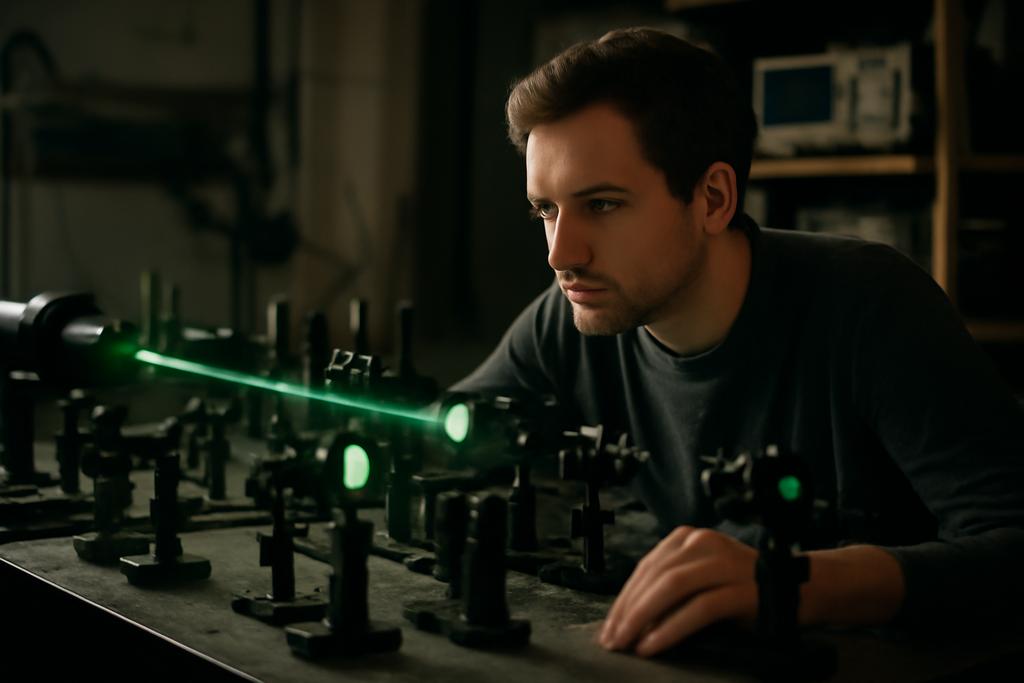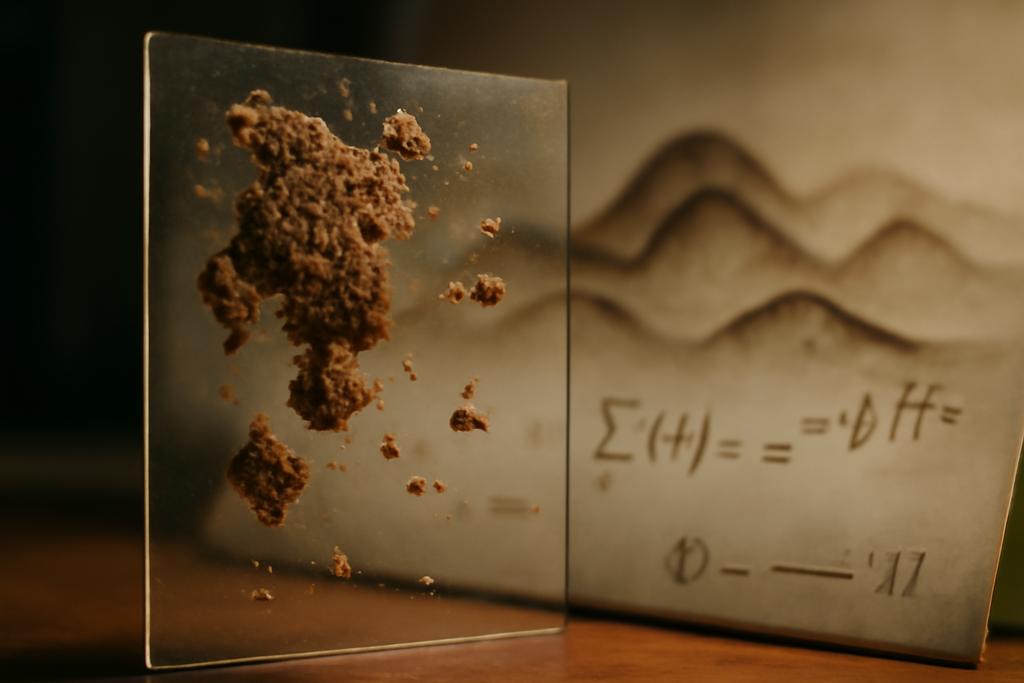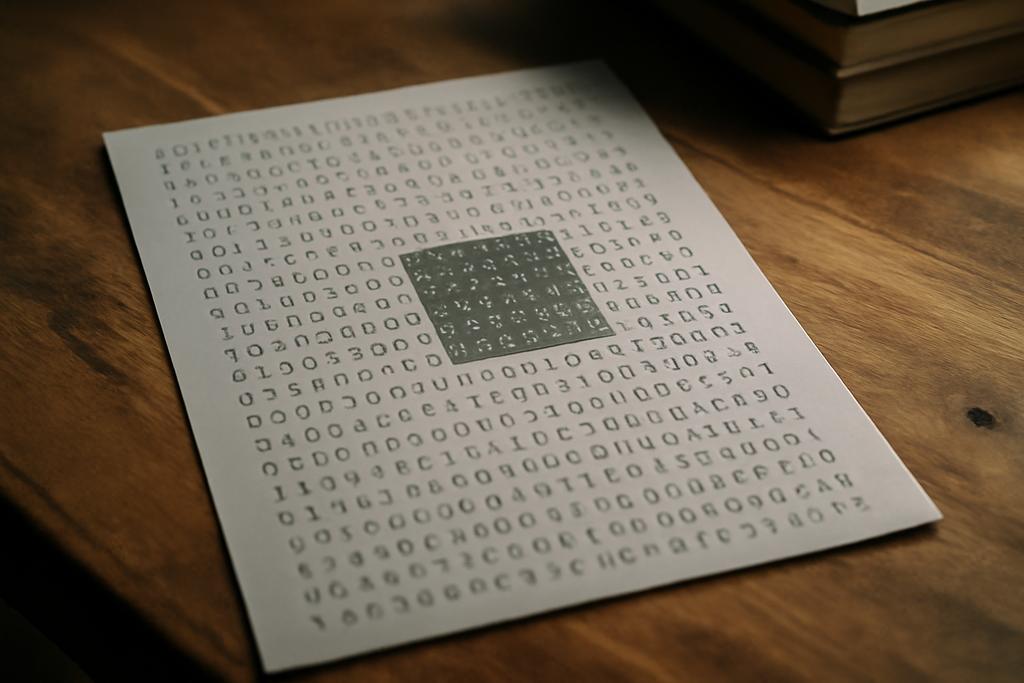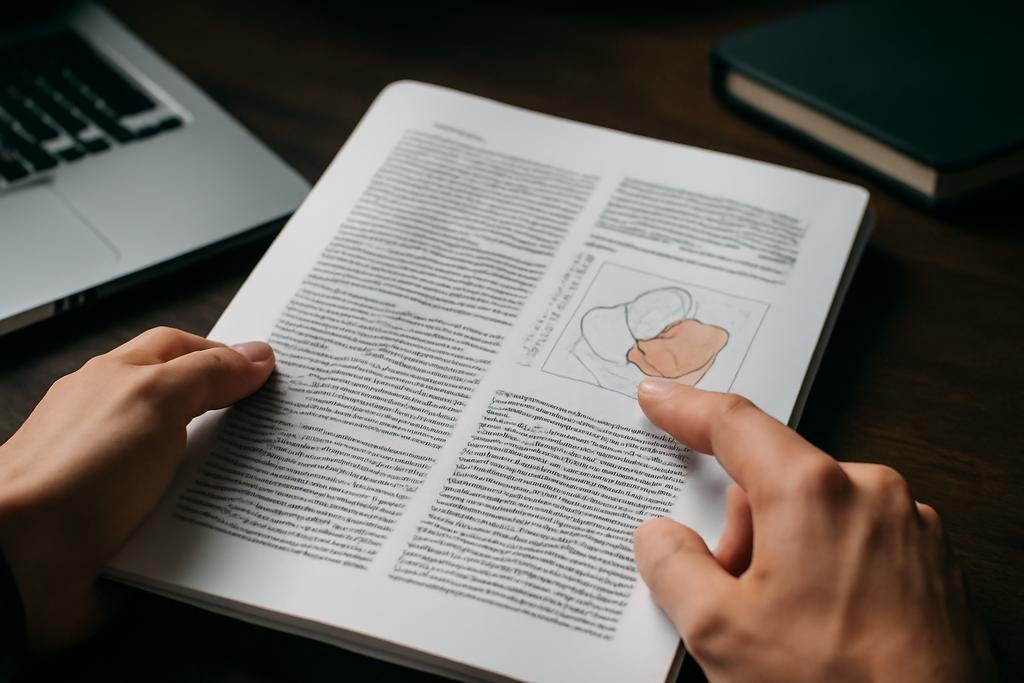The quantum world loves drama, but it often hides its most spectacular acts behind a curtain of math and lab benches. In a collaboration led by Nicky Kai Hong Li at Technische Universität Wien, with partners from ETH Zurich and Université de Sherbrooke, a team asks a practical question about one of the boldest claims in quantum science: can we convincingly certify genuine multipartite entanglement when our instruments force us to measure only a small slice of a much larger system? The answer, they argue, is yes — if we choose the right kind of slice and we know how to read it correctly. The work is a milestone in making entanglement a usable benchmark for real quantum devices, not just a theoretical curiosity. It also speaks to the everyday constraints of experimental platforms, from time-bin encoded photons to microwave photons in superconducting circuits, where wiring every qubit to every other qubit isn’t just hard — it’s often impossible.
To set the scene, picture a constellation of qubits arranged in a graph: each node is a qubit, each edge is a quantum handshake that couples two qubits. When you prepare a graph state, you create a web of correlations that can power measurement-based quantum computing, error correction, and advanced sensing. The catch is that knowing whether this web truly hosts multipartite entanglement — more than just a tangle of pairwise connections — usually requires looking at complicated, high-weight measurements that involve many qubits at once. In practice, many labs can only perform local operations on small groups at a time. Li and colleagues ask a natural and timely question: can we still certify GME, genuine multipartite entanglement, without checking every possible joint measurement? The answer hinges on a clever marriage of graph theory and quantum information, plus a dash of optimization magic called semidefinite programming.
The study first positions entanglement as a resource to be benchmarked rather than a property to be proved in the abstract. It’s a shift from asking, “Is this state entangled?” to asking, “Can we certify how deeply entangled it is, even if we’re limited to a subset of measurements?” The practical upshot is a toolbox that works under realistic constraints. In other words: we now have a way to say, with quantitative confidence, that a device is producing genuinely multipartite entangled states even if we can only poke at small parts of the system at a time. That kind of readout matters as quantum devices scale up, because labs will routinely face imperfect connections, noise, and limited measurement capabilities.
At the heart of the paper lies a sentence you can feel: entanglement is not something you must measure in full to trust. The team builds a family of criteria tied to graph states that require only measuring a small subset of stabilizers—the building blocks of a graph state. In plain terms, stabilizers are patterns of Pauli operators whose joint measurements reveal whether the state sits inside or outside certain entanglement classes. The authors show you can certify GME by summing absolute expectation values of a limited collection of stabilizers and stabilizer products. The number of needed measurements grows only quadratically with the number of qubits and is bounded by how connected the graph is. That bound is the practical magic here: for many graph families used in quantum protocols, you only need to look at a handful of entities at once.
Crucially, the authors also recognize a stubborn truth about experiments: sometimes you can’t measure the exact stabilizer you want, or you can only access a subset of correlators. They address this with a clever use of semidefinite programming to bound the unmeasured pieces from the pieces you can measure, and the known physics of the state you’re studying. In other words, even if your eye can’t see every thread in the web, you can still prove the web exists by solving a well-posed optimization problem that respects what you did measure and the mathematics of quantum states. This blend of theory and practical optimization is what makes the work more than a clever idea on paper; it makes it a real-world toolkit.
When you hear about the institutions behind the study, you hear the flavor of a modern, cross-border quantum effort. The work is anchored in Vienna, at TU Wien’s Atominstitut and the Vienna Center for Quantum Science and Technology, with foundational ties to the Institute for Quantum Optics and Quantum Information (IQOQI) of the Austrian Academy of Sciences. It’s complemented by ETH Zurich and the Quantum Center there, and by researchers at Université de Sherbrooke. The lead author, Nicky Kai Hong Li, writes these ideas into a framework that upper-level labs can actually implement, not just admire in the abstract. The collaboration mirrors a broader trend in quantum science: big problems demand big, diverse teams, but the solutions must be practical enough to live in the real lab where noise, loss, and imperfect control reign.
Graph states, stabilizers, and the problem of scalable entanglement
To understand what Li and colleagues are doing, it helps to anchor the idea in graph states. A graph is not just a pretty picture; it encodes how qubits talk to one another. Each vertex is a qubit, each edge a controlled-Z interaction that stitches two qubits into a joint quantum fabric. The resulting graph state is a stabilizer state, meaning it’s the special one that sits quietly at the intersection of many simple, checkable conditions. Each vertex has a stabilizer Si that depends on the X operator on that vertex and Z operators on its neighbors. The whole stabilizer group describes the state with a tidy, algebraic fingerprint: if you measure the right combination of Pauli operators and you get the state back, you know you’re in that graph state.
The practical upshot is elegant: if you want to verify a complex entangled state, you don’t need to fully reconstruct it (state tomography would melt under the weight of many qubits). Instead, you measure a manageable set of observables tied to the graph, and you use their patterns to certify GME. That’s a lifeline for real devices where connectivity matters. For laboratories building ring graphs, two-dimensional lattices, or tree graphs to support measurement-based computing and error correction, a stabilizer-based certificate can be both fast and honest about what portion of the network is truly entangled.
Li and colleagues push this idea further by introducing a specific, scalable criterion called the graph-matching GME criterion. It lives in a family of bounds that any k-separable state must satisfy, where k-separable means the state could be decomposed into k blocks that are independently entangled or not entangled with each other. If your measured stabilizers push the computed quantity beyond the bound for all possible k-cuts, you’ve certified k-inseparability — and in the big case, genuine multipartite entanglement. The beauty is that this criterion does not demand you measure all stabilizers or all multi-qubit products. It tolerates the reality of restricted measurements, and it tells you when the residual entanglement is strong enough to warrant calling the state genuinely multipartite entangled.
Practically, the theorem gives a recipe: pick a graph G you think your state is close to, measure a subset of stabilizers and stabilizer products up to a weight that scales with the graph’s maximum degree, and compute Wγ G(ρ), a sum of absolute expectation values weighted by a tunable parameter γ. If you surpass a bound that depends on how the graph could be partitioned, you can conclude that the state cannot be written as a mixture of states that are only bipartite across partitions. In other words, you’ve ruled out a whole swath of classical explanations for the correlations you see. The method is deliberately adaptable; if you can’t measure some pieces, you can still get a bound using SDP, a kind of mathematical tightening that respects your measured data while remaining faithful to quantum mechanics.
Working with restricted measurements: a practical recipe
The core idea is simple in words, though rich in detail. If a graph connects qubits locally (for example, each qubit interacts with a fixed number of neighbors), you don’t need to measure every possible interaction to tell whether the state is GME. The method requires measuring roughly O(n2) out of the 2n possible stabilizers and only up to m-body stabilizers, where m is bounded by twice the graph’s maximum degree. That means, for chain-like or grid-like graphs, the number of heavy measurements stays modest even as the network grows. This is the kind of scaling that matters when you imagine tens or hundreds of qubits in the future. The authors also point out that for many graph families with constant maximum degree, their approach becomes particularly frugal: you can certify GME by testing only a handful of stabilizers, even as the system size climbs.
But the paper does not pretend universality. There are graphs where direct, exact calculation of the bound is computationally heavy because it requires enumerating all possible k-cuts of the graph and finding maximum matchings within those subgraphs. The authors provide algorithms and discuss when the second, looser bound in their equation can be used as a practical stand-in. They also acknowledge that certain graph shapes, such as star graphs or complete graphs, demand more of the measurement apparatus because their entanglement structure is highly global. Still, even in those cases, the combination of measured stabilizers and SDP-based lower bounds often yields meaningful certification in realistic noise regimes.
Two other practical insights stand out. One is the role of local unitary transformations: the same entanglement structure can be rearranged by simply rotating the local qubits, and because entanglement is invariant under these local changes, the same graph-based criteria apply after a suitable LU transformation. The second is the robust message that you can tune γ between 0 and 1 to extract the strongest signal for a given state and graph. In some mixed-state examples with particular “Cthulhu” graphs that Li and colleagues discuss, the optimal γ sits strictly between 0 and 1, a reminder that the best tests sometimes live in the middle ground rather than at the extremes.
From analytic thresholds to microwave demonstrations
The paper doesn’t stop at abstract theorems. It works out analytical thresholds for how much white noise a graph-state family can tolerate before the GME/k-inseparability criterion fails to certify entanglement. In other words, it provides a clear map from a noisy lab reality to a yes-or-no verdict on entanglement strength. The authors analyze several graph families: chain/1D cluster states, ring graphs, 2D lattice cluster states, and tree graphs with constant degree. For each family they derive formulas that let you plug in the graph’s size and connectivity and estimate the maximum noise you can tolerate while still being able to confirm GME. This is exactly the sort of forward-looking guidance experimenters crave when planning larger, more ambitious devices.
They then move from chalkboard to simulated hardware, focusing on microwave-photon qubits generated in superconducting circuits. In such platforms, detecting a single photon is hard, and the natural readout method often yields noisy, continuous data rather than clean qubit measurements. This pushes researchers toward measurements with limited weight—think 5-body Pauli observables at most—precisely the regime their criteria are optimized for. The authors compare their approach to a previously known witness that also uses only a small number of measurements, the TG45 witness, and show that their GME/k-inseparability criteria often outperform it. In many ring-graph and ring-like structures with seven or eight qubits, their method certifies GME even when TG45 does not. That’s not just a win for theory; it’s a signal that the lab-friendly checklist can actually track the entanglement resources in more realistic devices.
What’s more, the authors demonstrate a practical twist: even when you cannot measure all stabilizer terms, you can bound the missing pieces with the dual form of SDP. This gives a principled way to quantify how much entanglement you can still certify with restricted hardware, turning a potential vulnerability into a controlled, quantitative statement about your device’s performance. In other words, the math is not just elegant; it’s a lifeline for experiments grappling with imperfect detectors, loss, and finite data.
The long view: why this matters for quantum technology
Why should we care about a clever certification method for graph states? Because genuine multipartite entanglement is not a luxury feature; it is a resource that powers key quantum technologies. For measurement-based quantum computing, the entanglement structure of a large graph state is the substrate on which computation unfolds. In quantum networks, GME enables tasks that would be harder or impossible with only bipartite entanglement, such as certain secure multi-party protocols and error-robust information distribution. In metrology and sensing, multipartite correlations can push measurement precision beyond classical limits. The new criteria give labs a reliable way to claim, with a quantified level of confidence, that their devices possess the necessary quantum coherence across many qubits, even if their hardware cannot perform all possible joint operations at once.
The study also hits a practical nerve: the march toward scalable quantum devices will be noisy, incomplete, and constrained. A certification toolkit that respects those constraints, rather than demanding idealized capabilities, is essential if we’re to compare devices, optimize architectures, and drive progress from dozens to hundreds of qubits. The authors’ SDP-informed approach is especially compelling here, because it offers a bridge between what you can measure and what you want to know. It’s a reminder that the power of quantum information often lies not in measuring everything at once, but in clever mathematics that lets you infer the whole from a trustworthy subset.
In the broader landscape of quantum science communication, the work stands out for its practical realism. It shows that the stabilizer framework, which many consider a textbook construct, can survive the slog of real laboratories where connectivity matters, noise dominates, and full tomography is out of reach. It’s a message of confidence: as we build more elaborate quantum devices, we’ll still be able to declare, with rigor and humility, how entangled they truly are. The authors’ joint venture across Vienna, Zurich, and Sherbrooke reflects how modern quantum research looks: big ideas travel fast when people combine deep theory with hands-on engineering, and when universities across borders choreograph a common language for measuring the invisible.
Looking ahead: a practical toolkit for a quantum future
What comes next is as practical as it is exciting. The graph-matching GME criteria are designed to adapt to the real constraints labs face, and the SDP extension provides a flexible way to cope with missing data. In the near term, we can imagine a wave of experiments that test larger graph states in time-bin, photonic, and microwave platforms, with certification reported as a standard bench-mark alongside fidelity and error rates. In the longer run, the method could influence the design of experiments where entanglement itself is a resource you optimize for, rather than a pre-existing feature to certify after the fact. If we want a future where quantum devices can tackle complex networks, distributed sensing, or fault-tolerant MBQC, having a practical, scalable way to certify GME is not optional—it’s foundational.
Of course, no single method is a silver bullet. The computational cost of enumerating all k-cuts grows with the graph’s size, and some graphs demand more measurement heft than others. The authors are transparent about these limits and point to extensions, including more sophisticated approximations and further SDP refinements, as paths to keep the approach scalable. The message, though, is hopeful: we now have a concrete, usable way to translate the often elusive language of entanglement into the language of lab measurement. That translation is essential if quantum devices are to live up to their promise and become reliable tools in science, medicine, and technology.
Key takeaway: you don’t need to measure every possible joint property to certify that a quantum device is truly entangled across many parts. A carefully chosen, graph-informed subset of measurements plus smart optimization can reveal the whole picture, guiding the next generation of quantum hardware toward practical, trustworthy performance.
In sum, Li and colleagues give experimentalists a sturdy, adaptable lens for viewing the entanglement that makes quantum advantage possible. It’s a lens built from graph theory, stabilized by the stabilizer formalism, sharpened by semidefinite programming, and aimed straight at the noisy reality of modern quantum labs. The study from TU Wien, ETH Zurich, and Université de Sherbrooke — with lead author Nicky Kai Hong Li — is a reminder that bold ideas in quantum science become powerful when they meet the constraints of the real world and find a way to bend those constraints toward clarity and progress.










